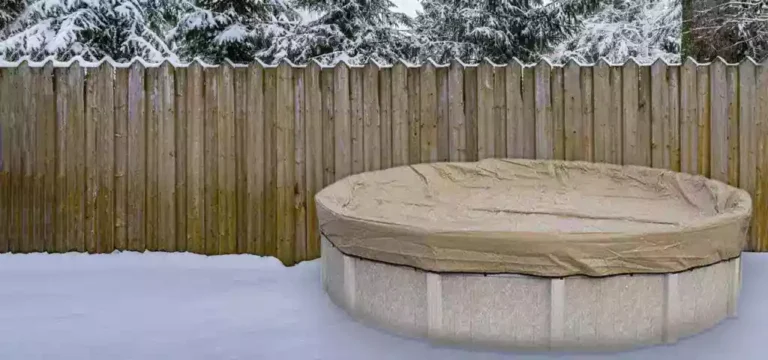Winterizing your above-ground pool is a critical task as the colder months roll in. It’s not just about covering the surface and hoping for the best; it involves a detailed process to ensure your pool remains in prime condition during winter’s freeze and thaws, ready to provide family fun when the warmer months roll around again. This undertaking requires some time and energy but will save you a significant amount of effort, and even more importantly, money in the long run. When you winterize your pool properly, you’re protecting your investment and setting yourself up for a successful and hassle-free swimming season opening in the spring.
Check Weather Forecast

To begin your pool winterization, it’s important to keep a keen eye on the weather forecast. This step is essential because it helps you plan your pool closing before the first hard freeze. Freezing temperatures can damage its structure and equipment, so it’s ideal to winterize your pool when temperatures are consistently dropping below 65 degrees Fahrenheit, but still above freezing. Doing so also helps prevent the growth of algae, which thrive in warmer temperatures. Keep in mind that winterizing it is not a single-day task, so make sure you have a stretch of several days with appropriate weather conditions to perform all necessary steps effectively.
Gather Necessary Supplies
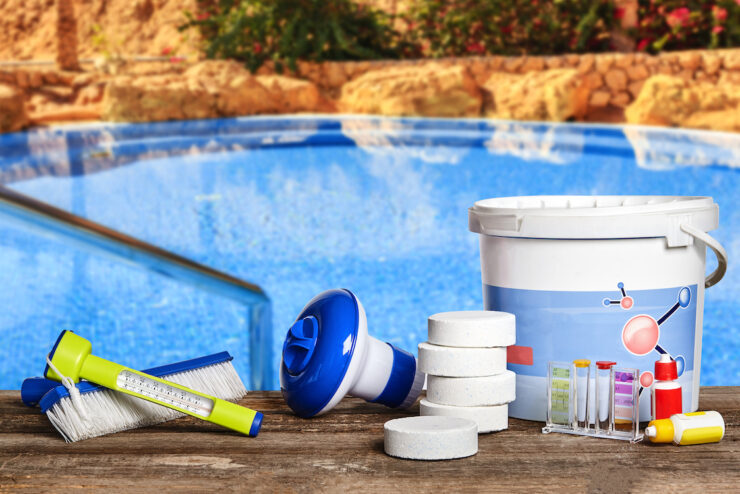
Next up is gathering all the necessary supplies to winterize your pool. This checklist will help you ensure that you’re well-equipped to get started. Here’s what you’ll need:
Winter cover: This cover protects your pool from debris and severe weather. It’s designed to withstand winter conditions and is a must-have for any owner.
Air pillow: An air pillow is placed in the center of the pool before the cover is put on, to prevent its cover from freezing to the water’s surface.
Pool antifreeze: This non-toxic antifreeze protects your pool’s plumbing from freezing and bursting.
Winterizing plugs: These plugs block water from entering your pool’s equipment and plumbing.
Winterizing chemicals: These special chemicals help keep your water balanced and algae-free during the winter.
Pool skimmer cover: This plate blocks water from entering your skimmer, preventing potential freeze damage.
Ensure you have these supplies on hand before you begin the winterization process.
Clean the Pool
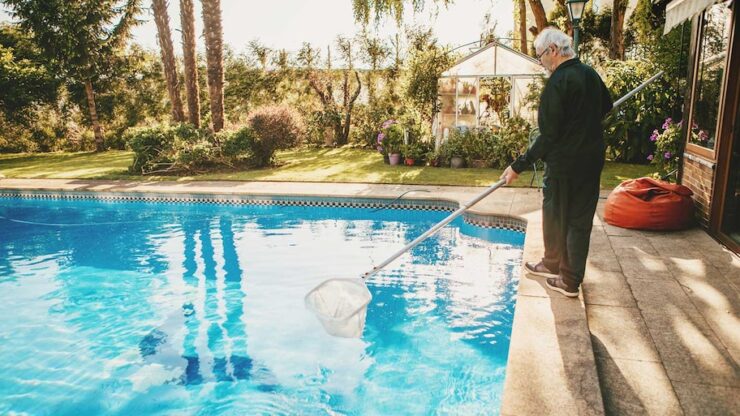
Before you start the winterization process, give your pool a thorough cleaning. This includes scrubbing the sides and bottom of the pit to remove any existing algae or other growth, vacuuming to remove debris, and cleaning the skimmer and pump basket. It’s also crucial to backwash and clean your filter system. This cleaning process is important to prevent staining and growth of bacteria and algae during the winter, which could complicate your swim season opening in spring. You’d be wiser to leave the cleaning process to professionals such as littlepoolco.com, a Raleigh above ground pools company who excels in this domain.
Balance the Pool Water
Balancing your water chemistry is another critical step in winterizing your pool. Use a testing kit to check and adjust your pool water’s pH, alkalinity, calcium hardness, and chlorine levels. Additionally, add a winterizing chemical kit to your water. These chemicals are designed to work over the winter months, preventing algae growth and maintaining water clarity. This step ensures that your water remains healthy during its winter hibernation and is ready for a smooth start in the spring.
Lower the Water Level
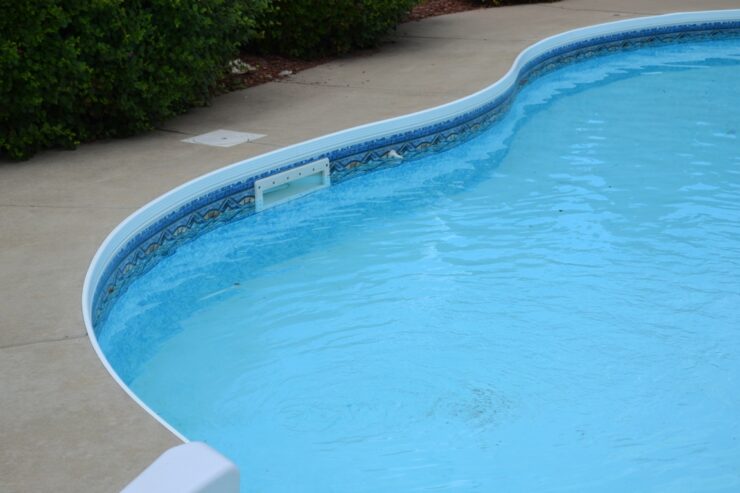
Lowering the water level in your pool is important to prevent freeze damage. Ice expands as it freezes, and if the water level is too high, this expansion can damage your walls and skimmer. The water level should be lowered below the skimmer mouth but not more than a few inches below. You can use your pool’s pump or a submersible pump to lower the water level. Remember, it’s better to err on the side of caution; don’t drain your pool too much as this could lead to structural issues.
Drain and Store Equipment
Now it’s time to protect your pool equipment. Start by removing and storing any removable parts such as ladders, rails, and toys. Next, drain your pump, filter, heater, and chlorinator to prevent water from freezing and damaging them. If possible, it’s a good idea to remove the pump and store it indoors. For the hoses, drain and clean them, then store them in a dry and protected area. Be sure to also cover exposed pipes with insulation to prevent freezing.
Winterize Plumbing
Winterizing your pool’s plumbing is critical to prevent the freezing and bursting of pipes. Start by removing all drain plugs from your equipment. Next, blow out the lines using a shop vac or an air compressor to ensure all water is removed. Once this is done, add pool antifreeze to the lines following the manufacturer’s instructions, then plug the lines using winterizing plugs. This step protects your property plumbing system from potential freeze damage.
Install Winter Pool Cover
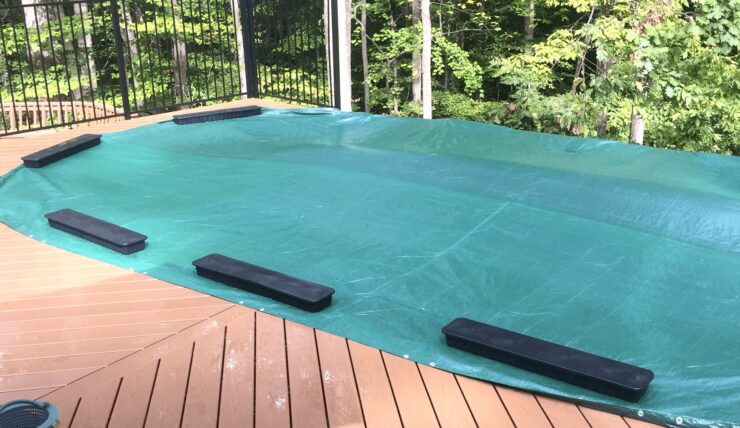
Installing your winter cover is the final step in the winterization process. Before installation, inflate and place an air pillow in the center of the pool to ease pressure on its walls from ice expansion and to help keep water and debris off to the sides. Then, lay the cover over the pool, securing it tightly with a cable and winch or cover clips. The cover should be tight and secure, but not overly strained. Throughout winter, check the cover regularly to ensure it’s secure and clear off any buildup of water or snow.
Winter Maintenance
Even after winterizing your pool, periodic maintenance is necessary. Monitor your cover throughout the winter for snow buildup; heavy loads can stretch or tear the cover, so remove snow gently using a roof rake. Also, check regularly for signs of damage or loosening of the cover and make necessary adjustments or repairs. This winter maintenance ensures it remains in optimal condition throughout the off-season.
Spring Opening
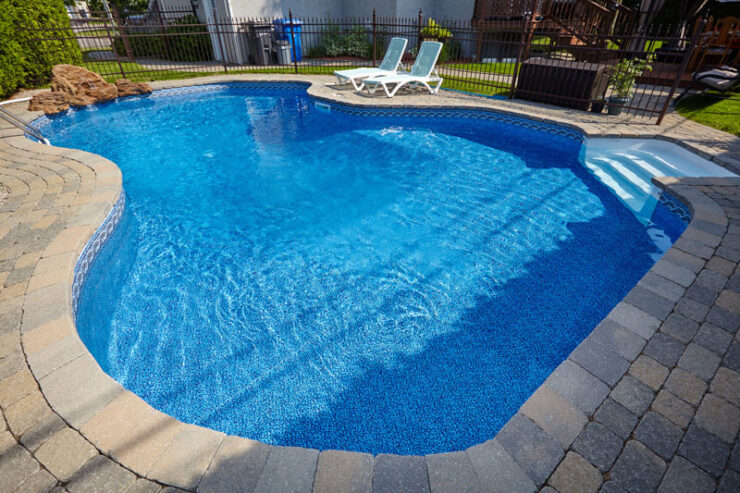
Looking ahead to the spring, if you’ve properly winterized your pool, opening it for the season will be a breeze. The process includes removing the winter cover, reassembling and reconnecting your equipment, refilling it to its normal water level, balancing the water chemistry, and reintroducing your pool cleaning routine. As you see, proper winterization sets the stage for an easier and cost-effective opening in the spring.
Conclusion
Winterizing your above-ground pool is an important task that protects it from potential freeze damage and ensures a smooth transition when spring arrives. By following these steps, you’re not just maintaining your pool; you’re extending its lifespan and optimizing your investment. Don’t let winter’s harsh freeze take a toll on it. Take action, prepare your pool for the winter season, and beat the freeze!

